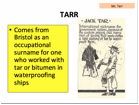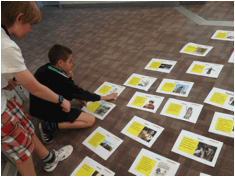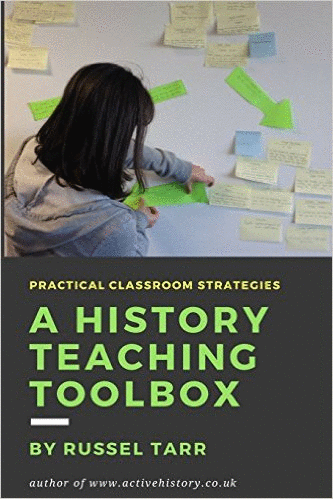World History teaching resources for the high school classroom: lesson plans, worksheets, quizzes and simulation games for KS3, IGCSE, IB and A-Level teachers.
Your Personal History: Where does your name come from?
A Year 7 History Project and display task helping students understand what life was like in the Middle Ages
(there is also a printable version of this lesson plan available and a PowerPoint Template)
 A person’s surname in English tells us a lot about their ancestors’ job, personality or where they lived. In this lesson we will do some research on surnames and decide how much they tell us about life in the Middle Ages.
A person’s surname in English tells us a lot about their ancestors’ job, personality or where they lived. In this lesson we will do some research on surnames and decide how much they tell us about life in the Middle Ages.
Stage 1. Research
Get a list of surnames of students in your class (and / or of teachers!).
EITHER - Divide the names between the class. Each student needs to research the origin and meaning of each of the names in their list first (although they can move on to others if they wish).
OR – For a more competitive edge, the class can be put into teams. Each time a team finds the origin of a name they should come up to the board and write its meaning under the name. For each correct name identification, you get a point. The winning team is the one with the most correctly identified names.
TIP: start with the names of the people in your team!
Examples:
Smith: Blacksmith | Cooper: barrel maker | Tarr: Someone who coated ships with tar
Stage 2. Feedback

The class will now exchange its findings so that everyone has a full list of names and their meanings. Divide these between the members of the class. Each person should produce PowerPoint slides in the format shown in this picture for each of the names they have been given.
• Your teacher can provide you with a PowerPoint template for this purpose.
Stage 3. Production (main task, completed for homework)
In the case of surnames based on PLACES, plot them on a map. Provide a brief explanation for each one so it is clear why you have plotted it in that spot.

In the case of surnames based on PROFESSIONS, organise a selection of these in the form of a Diamond 9, which the most “high status” names towards the top, and the “low status” jobs towards the bottom (9, 16, 25 or 36 names could be arranged in this way).
Alternatively, you can arrange these in a “Diamond 9” diagram using www.classtools.net.
IMPORTANT: Whichever option you choose, make sure that you take the time to EXPLAIN the meaning and origin of each of the surnames you include in your project. The final work of the class should be put up as a display piece!

© 1998-2026 Russel Tarr, ActiveHistory.co.uk Limited (Reg. 6111680)
1 Torrin Drive, Shrewsbury, Shropshire, SY3 6AW, England
Privacy Policy | Contact






